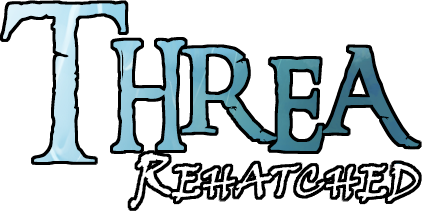Reason given for below revision:
Put the unfinished parts into comments so the page can be made public; added fewiggs
Welcome to the fauna compendium! It lists and details all the known animals and elementals of Threa. Indeed, elementals are considered a part of the fauna. Although they are not made out of cells, eat magic rather than physical matter, and reproduce almost exclusively in an asexual form, they are basically like beasts to the Threan peoples. It makes no difference to them, and there are elementals and animals that blur the line between the two, being something of both.
Earthly fauna does not exist in Threa. No animal – not even insects – that exists on Earth exists exactly like that on Threa. Many of Threa's creatures are allegories to those of Earth, and there are even a few that are almost exactly like them, but they are not alike them after all. A different world leads to a different evolution, especially given the fact that the evolution of this world has been influenced by magic.
The best indicator of the otherness of Threa's fauna is that Saurians and avians are the dominant lifeforms. Mammals do exist, but they are limited to small forms on land, such as rodents, mustelids, bats, certain ungulates, and lagomorphs. In the waters, they have managed to acquire greater shapes, though even there they cannot rival the size of the saurians – some of their aquatic cousins are truly enormous. Humans, or any primates for that matter, do not exist at all. Lin, wolshaks, and dragons make up all intelligent life.
The below list is not exhaustive. It only elaborates on fauna that has come up in roleplay, stories, or similar.
F
Fewigg

Fewiggs are small, winged mammals. Their size is determined by measuring the length of their bodies from the tip of the tail to the end of the muzzle. Males reach a length between 48 and 80 cm (1'7''–2'7''). Females reach a length between 42 and 60 cm (1'5''–2'). They have four paws, each with five digits that are tipped with white to gray claws. They also have fuzzy ears and curved horns above them, which can be white or a light shade of gray. Only rarely have fewiggs with black horns been spotted.
The fur of a fewigg varies in color. It can be brown, gray, white, very rarely black, and it can even feature a wide variety of patterns. Some fewiggs even seem to wear 'masks' on their faces. Gradients and highlights are very common, as seen on the fewigg in the image to the right. A thin layer of the furcovers their wings. During winter, fewiggs grow a thick winter coat, which can differ in color. It is normally paler.
Their wings are large enough to allow for short, powered flights. Fewiggs can use their wings to fly up to a roof or into a tree, but their best use is gliding from a high place to a lower one.
In the wild, fewiggs are a territorial, solitary species. They build nests out of various naturally available materials, either in an existing or a self-dug shallow burrow. Fewiggs use flight to catch small birds or raid nests. They are carnivores and gladly feast on all kinds of small creatures, even if they are a bit larger than themselves. Their high intelligence (compared to their prey), quick reflexes, and high speed make them capable hunters.
Peoples have managed to domesticate fewiggs. They use the winged hunters to exterminate vermin, like grain-eating rodents, thus preventing them from spreading diseases and destroying stockpiles of food. Even troublesome bird populations can be kept in check by using fewiggs. It is also easier to keep a fewigg than a bird of prey because they are less dangerous and cannot as easily fly away. Fewiggs are also kept as companion pets; it is quite amusing to play with the energetic little guys.
Not all fewiggs that live in urban areas are tame. A share of feral fewiggs does live within settlements. They inhabit attics primarily, in which they build nests out of stolen hay or bits of cloth, and use the building tops to glide to other places. However, fewiggs do not become pets themselves. They are not known to bite people, and they do not destroy stockpiles, though they do sometimes steal bits of food. Their primary prey remains other small critters, so their presence is overall tolerated, sometimes even approved of as a form of natural pest control.
